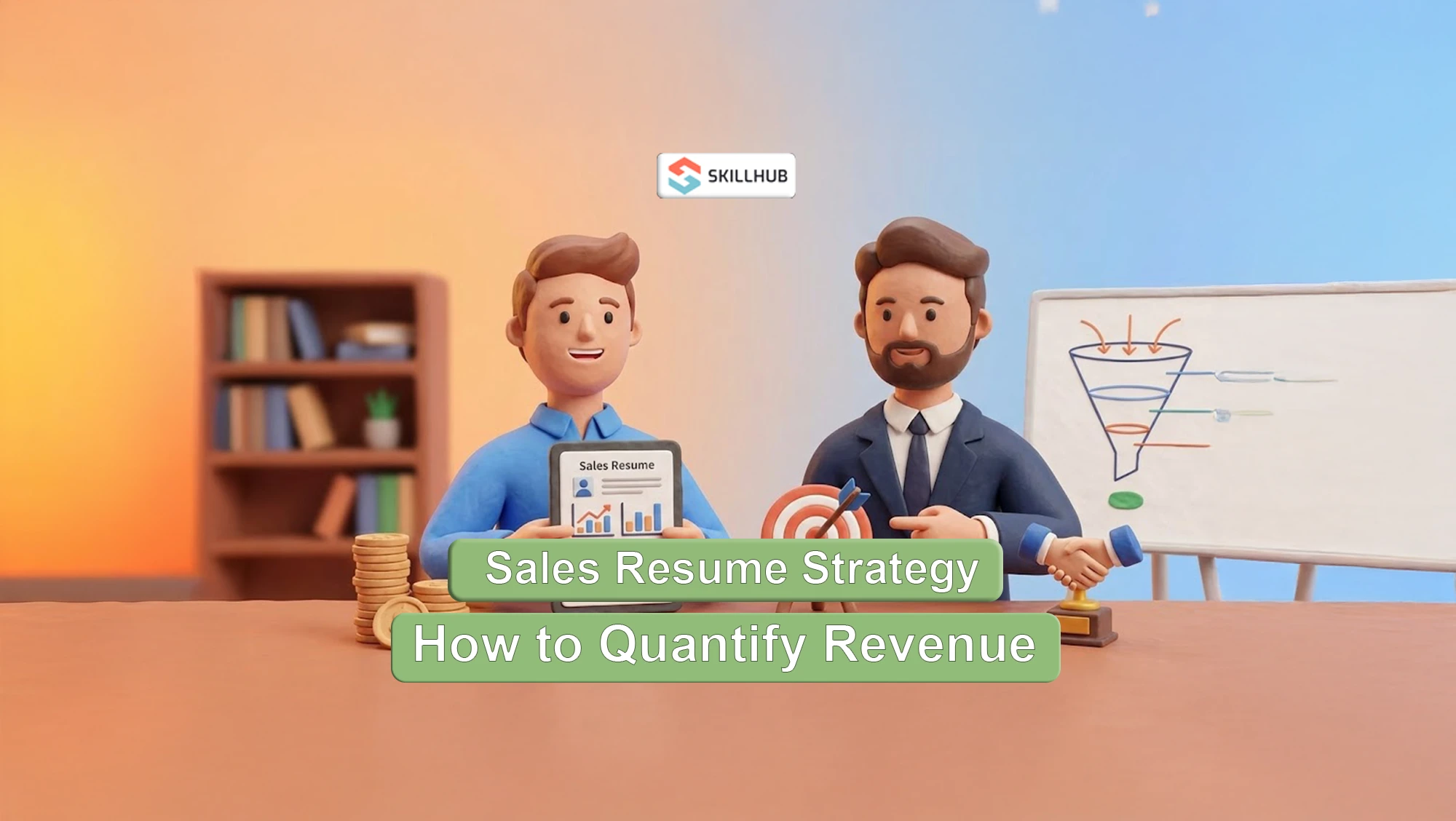The Top 10 Behavioral Interview Questions and How to Use the STAR Method to Answer Them

The modern, high-stakes job interview has evolved far beyond simple questions about your resume. Today's top-tier employers, from FAANG companies to Fortune 500 corporations, rely almost exclusively on a sophisticated psychological assessment tool: behavioral interview questions. These questions, typically starting with phrases like "Tell me about a time when..." or "Give an example of...", are not designed to test your knowledge. They are designed to dissect your past behavior to predict your future performance under pressure. This is a test of character and competence, and you must be prepared.
Failing to answer these questions with a structured, evidence-based methodology is the single most common reason highly qualified candidates are rejected. A generic, rambling, or purely anecdotal response signals to the recruiter a critical lack of self-awareness and strategic thinking. The only acceptable framework for responding is the STAR Method (Situation, Task, Action, Result). This is not a suggestion; it is the industry standard for articulating professional value. This guide provides a detailed breakdown of the ten most common behavioral questions and the precise STAR-based strategy to answer them flawlessly.
The STAR Method: A Non-Negotiable Framework for E-E-A-T
Before we dissect the questions, we must internalize the framework. The STAR method is a narrative structure that forces you to move beyond vague claims and provide a concise, data-driven case study of your abilities. It is the ultimate tool for demonstrating Experience, Expertise, Authoritativeness, and Trustworthiness (E-E-A-T) in a live setting.
Recruiters are trained to detect and discard 'we' answers. When asked a behavioral question, they are assessing your individual competence, not your team's collective effort. The 'Action' step of your STAR response must be ruthlessly focused on the word 'I'. 'I designed,' 'I implemented,' 'I resolved.'
The Top 10 Behavioral Questions and How to Master Them
Below are the ten most common behavioral questions you will face, along with the strategic focus for structuring your STAR response.
1. "Tell Me About a Time You Had to Handle a Difficult Stakeholder or Client."
- What They're Really Asking: Can you manage conflict professionally? Do you possess the emotional intelligence to de-escalate a tense situation while protecting the company's interests?
- Strategic Focus:
- Situation: Briefly describe the stakeholder's role and the nature of their dissatisfaction. Be factual, not emotional.
- Task: Your mandate was to resolve the stakeholder's issue while adhering to project constraints or company policy.
- Action: Detail the specific steps you took to listen, validate their concerns, investigate the root cause, and propose a solution. Focus on communication and problem-solving.
- Result: Quantify the outcome. "By implementing a new bi-weekly reporting system, we restored the client's confidence, leading to a 15% budget increase for Phase 2 and a signed 2-year contract extension."
2. "Describe a Situation Where You Disagreed with a Supervisor's Decision."
- What They're Really Asking: Do you have the courage to voice dissent constructively? Can you challenge an idea professionally without undermining authority? This question tests your judgment and leadership skills.
- Strategic Focus:
- Situation: Concisely explain the project and the specific decision made by your supervisor.
- Task: Your responsibility was to ensure the project's success, which required you to present an alternative perspective based on data you possessed.
- Action: Describe how you approached your supervisor privately. Detail how you presented your data-backed counter-argument, focusing on the potential risks of their initial plan and the benefits of your alternative.
- Result: The ideal outcome is that your supervisor incorporated your feedback. "After reviewing the data, my manager adjusted the project timeline, which prevented a potential $50,000 budget overrun and ensured we hit our launch deadline." Even if they didn't, showing you can "disagree and commit" is a positive result.
3. "Give an Example of a Time You Failed."
- What They're Really Asking: Are you self-aware? Can you take accountability for your mistakes and, most importantly, learn from them?
- Strategic Focus:
- Situation: Choose a real, but not catastrophic, failure. Be specific about the project and what went wrong.
- Task: Your goal was X, but due to your miscalculation or oversight, the outcome was Y.
- Action: State clearly what you did wrong. Then, immediately pivot to the actions you took to mitigate the damage and, crucially, the new process you implemented to prevent the mistake from happening again.
- Result: The result is the lesson learned and the system you improved. "This failure led me to develop a new pre-launch QA checklist, which has since been adopted by the entire department and has reduced post-launch bugs by over 30%."
4. "Tell Me About a Time You Had to Work Under a Tight Deadline."
- What They're Really Asking: How do you perform under pressure? Can you prioritize tasks, manage your time effectively, and deliver high-quality work without direct supervision?
- Strategic Focus:
- Situation: Describe an urgent, high-stakes project with a compressed timeline.
- Task: Your objective was to deliver a specific outcome within the non-negotiable deadline.
- Action: Detail your prioritization process. How did you break down the project into manageable tasks? How did you delegate or decline non-essential requests?
- Result: Quantify the successful delivery. "By creating a focused work-back schedule and eliminating non-critical meetings, I delivered the project 8 hours ahead of the 48-hour deadline, which allowed the sales team to secure a key client contract worth $250,000."
5. "Describe a Time You Took Initiative or Went Above and Beyond Your Job Description."
- What They're Really Asking: Are you a passive employee who waits to be told what to do, or are you a proactive problem-solver who seeks to add value?
- Strategic Focus:
- Situation: Identify a problem, inefficiency, or opportunity that was outside your direct responsibilities.
- Task: You assigned yourself the task of solving this problem.
- Action: Describe the steps you took, on your own time or with your own resources, to develop and implement a solution.
- Result: Show the quantifiable impact. "I noticed our onboarding documents were outdated, so I took the initiative to rewrite them. This new guide reduced the average new-hire ramp-up time from 4 weeks to 2.5 weeks, a 37% improvement in efficiency."
The Expertise Barrier: Why Candidates Fail the Behavioral Interview
Structuring a perfect STAR response under pressure is a technical skill. It requires instant recall of quantifiable achievements, strategic thinking, and the ability to articulate complex actions into a simple, high-impact narrative. Most candidates fail because they have not prepared and rehearsed these stories in advance. They ramble, focus on feelings instead of facts, and fail to provide the quantifiable results that recruiters are trained to listen for.
Can you, with 100% certainty, walk into any interview and flawlessly deliver data-driven, compelling STAR-method answers to the toughest behavioral questions?
Our experts provide one-on-one mock interview sessions, helping you identify, structure, and perfect the STAR stories that will land you the offer. Do not leave this critical step to chance.
6-10: More Critical Behavioral Questions to Master
- "How Do You Handle Competing Priorities?" (Tests prioritization and time management).
- "Tell Me About a Time You Had to Persuade Someone to See Your Point of View." (Tests influence and communication skills).
- "Describe a Long-Term Project You Managed. How Did You Keep It on Track?" (Tests project management and strategic planning).
- "Give an Example of a Goal You Reached and Tell Me How You Achieved It." (Tests ambition and execution ability).
- "Tell Me About a Time You Worked on a Team." (Tests collaboration and teamwork skills).
For each of these, your preparation is the same: pre-identify your strongest career stories and meticulously structure them within the STAR framework. Write them down. Rehearse them. Your ability to deliver these narratives concisely is what separates you from the competition. While a strong resume gets you the interview, mastering these top interview questions and answers is what gets you the job.
Conclusion: The Interview is a Performance
The behavioral interview is not a conversation; it is a performance. You are the protagonist, and your STAR stories are the evidence of your value. By preparing for these ten questions, you are not just memorizing answers; you are building a library of case studies that prove your competence. Walk in prepared, and you will walk out with an offer.
%20(1).png)



%20(1).webp)